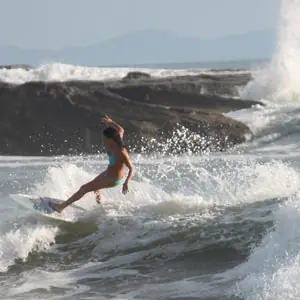According to Sarah Anisman, M.S., Fitness Director of Snowcreek Athletic Club in Mammoth Lakes, foot fitness, or barefoot winter conditioning programs used for ski exercises, are catching on "like wildfire" in the snow community.
More: Barefoot Running
Outdoors Events Near You
That's the reason Snowcreek provides several training programs for mountain dwellers who need to get ready, physically and mentally, for the oncoming season. Anisman has employed the willPower method of barefoot physical training, which combines the benefits of cardio-sculpt, the intensity of boot-camp, the self-awareness of yoga and discipline of Pilates into one cohesive, barefoot regimen.
Her motive for adding this class to her winter conditioning agenda is to develop ankle, knee and hit stabilization in order to facilitate better movement and prevent injury.
More: Ski Exercises
"So many of our problems start from the ground up, with such a complex network of bones, ligaments and musculature in our feet," she says, attributing pain and in some cases, injury in our ankles, knees and back to improper footwear or unconditioned feet. Plus, sometimes athletes are pigeon footed, duck footed, walk with the pinky-side down or big-toe side down. "So we need to realign from the ground up," she says, "and bring our feet back to neutral."
Here are a few tips to get you started in foot fitness:
Learn Where to Place Your Weight
"There's that age-old rumor; people always say, 'Don't let your knees pass your toes,' but, if you think about it, when you walk down stairs, your knee passes your toes," Anisman points out. So her barefoot students re-learn how to functionally move their knees past their toes, which happens all the time in skiing and snowboarding. "The key is keeping your weight behind you and not putting it into your knee," she says.
Standing Footwork
This involves toe and foot exercises like standing with your toes spread and off the ground, trying to lift your pinky toe as high as your big toe or touching your big toe only to the ground. Other exercises include balancing and stretch work.
According to Anisman and Stacey Lei, the willPower creator, standing footwork increases strength, flexibility and overall coordination of toes. "Being able to spread your toes out is so important," says Anisman. "When you wear shoes all day long, they're crunched together. For some people, they may even cross over each other."
Foot Massage
Both Anisman and Lei also stress the importance of foot massage for keeping your feet circulated and more flexible and teaching self-massage is part of their curriculum. It's good to do before and after skiing or snowboarding in-season, but also just as important to do before or after whatever it is you're going to be doing for training in the pre-season, whether it's yoga, strength training, Pilates, running, surfing, basketball—even walking.
More: Fall Workouts For Ski Season




